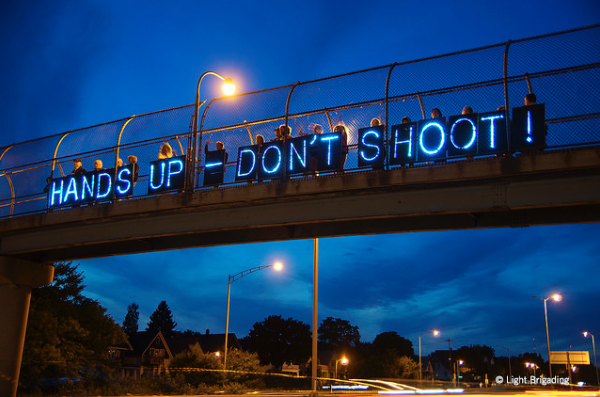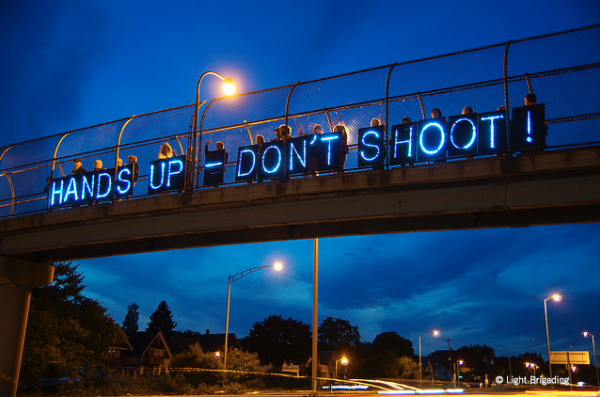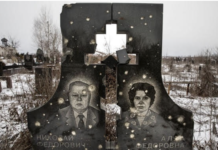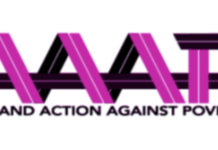We will never know for sure if these were the last words of Michael Brown before being shot to death by a police officer in Ferguson, Missouri a year ago. But, they have come to embody the cries of a movement for police reform in the USA. Congressmen, football players, and celebrities around the world have used this simple refrain and gesture in solidarity and activism for change. These actions are sparking a much-needed debate on police brutality. Let’s examine the results.
A year later, what has America learned from Ferguson? There was no justice for Michael Brown’s family. The police were not charged with any crime in the killing of this unarmed teenager. A few weeks before Michael Brown’s death, Eric Garner, a 43-year-old father, was strangled to death by the police in NYC. He died saying “I can’t breathe.” No officers were charged with this death, despite medical examiners deeming it a homicide and video evidence showing Mr Garner saying “I can’t breathe” 11 times. The impunity of police led to massive protests, forcing the US Department of Justice to intervene and conduct an independent investigation. Activism made a difference, and the city of New York decided to settle Eric Garner’s case out of court.
How many people have been killed by the police in the US? So far this year, 680 people and counting. It went up by six people since I started writing this yesterday. Murder by police is not unique to the African-American community. About half of the police killings are of white people. The Guardian has set up a website where you can watch the numbers rise. July was the deadliest month: police killed 118 people. Twelve of the people killed this year were children.
Amnesty International conducted thorough research on whether the US police system complies with international law. The findings were shocking. Every single state failed to comply with international standards on police use of deadly force. International law requires that lethal force only be used as a last resort and when necessary for police to protect themselves or others against imminent threat of death or serious injury. Police in the US are predominantly hired and regulated at the state and local level, which makes national reforms difficult. There is no official tracking of killings by police. Not a single state has an accountability mechanism within its guidelines to evaluate whether use of force was appropriate. Nine states and DC lacked any laws about deadly force; police have full discretion to kill without citizens having clear laws to challenge it.
What can be done about this? Since Michael Brown’s death a year ago, 24 states have passed 40 measures trying to regulate police conduct. I am confident none of these changes would have happened without the activism and public demands for accountability, but there is still a lot of work to be done. New laws range from training on racial bias, to independent investigations on shootings by police, and limits of use of military equipment by law enforcement agencies. Sixteen states have passed laws about body cameras being worn by police.
While people wait for new laws to take effect, 680 people have been killed by police this year. Lawmakers in Missouri, where Michael Brown was killed a year ago, tried to pass 65 different bills related to the Ferguson killing and subsequent investigations. Only one of these measures – limiting court fines and traffic tickets – was passed. There were no changes to Missouri’s laws on when police can use deadly force.
In my hometown a couple weeks ago, a man was shot suddenly in the head by a university police officer during a routine traffic stop. His “crime” was having a missing front license plate on his Honda Accord. The officer who shot Samuel DuBose was initially not charged with any crime. But, after protests and lawsuits, the video footage from a body camera was released. It showed a complete contradiction from the reports given by officers on the scene, and the officer who killed him has now been charged with homicide. Samuel’s last words before being shot were, “I didn’t even do nothing.”
by Michelle Blau, Engagement Manager at Amnesty International in New Zealand







Man oh man….just so incredibly bad.
Speechless.
And this is the country which purports to spread “democracy” to the rest of us.
If this is your brand of democracy USA we want none of it.
And while we’re nowhere as bad as this in New Zealand (yet), we now have frontline police to be routinely armed with tasers.
Militarisation of police has not worked at all well in the USA. And it won’t work here.
You write “Police in the U.S. are predominantly hired and regulated at the state and local level….”. I suggest that perhaps this is where one can find the root cause of the problem. The brain most times can be easily twisted by psychopaths who know how. There are two victims – the one who is dead and the one with the programming. The psychopath doesn’t care about either….all in a day’s work.
I initially believed the accounts that Michael Brown had his hands up at the time. However what we now know from the inquest that was held, was that most of the witnesses actually saw him attacking the officer, and that the shooting was in self-defense. They also interviewed some of the initial witnesses who claimed to have seen him with his hands up and it turns out they basically falsified their accounts. Sadly there was also a lot of pressure on witnesses to lie and they had to give protected evidence because they were threatened and called ‘narks’ if they didn’t toe the line that he had his hands up.
That’s not to say that the Police in the States aren’t in cases terribly dangerous and do routinely kill innocent people, but this wasn’t one of those times.
Comments are closed.